The iPad Air Review
by Anand Lal Shimpi on October 29, 2013 9:00 PM ESTDisplay
In building the iPad Air Apple shrunk all elements of the tablet’s design, including the thickness of the display. We’re still dealing with a 9.7-inch 4:3 2048 x 1536 IPS LCD panel with true RGB stripe rather than some weird subpixel structure. Viewing angles are still great, and overall the display remains the best you can get at this size.
![]()
The iPad Air continues Apple’s recent history of shipping color calibrated displays. Color accuracy on my iPad Air review sample is better than on any previous iPad I’ve ever tested, in fact it’s more accurate than any other tablet I’ve ever tested. The numbers are easily backed up by images that show a vibrant and, more importantly, accurate display.
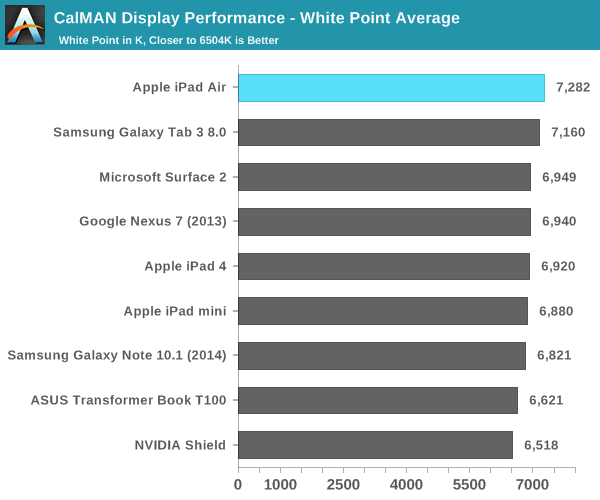
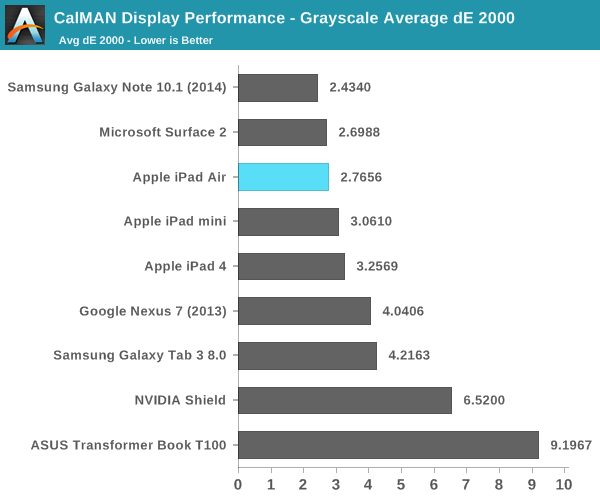
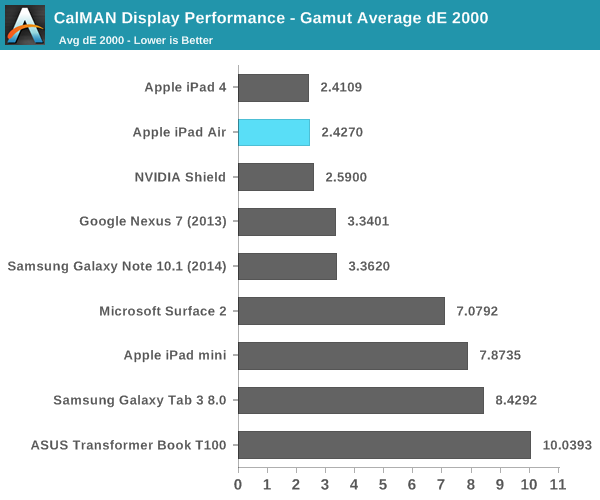



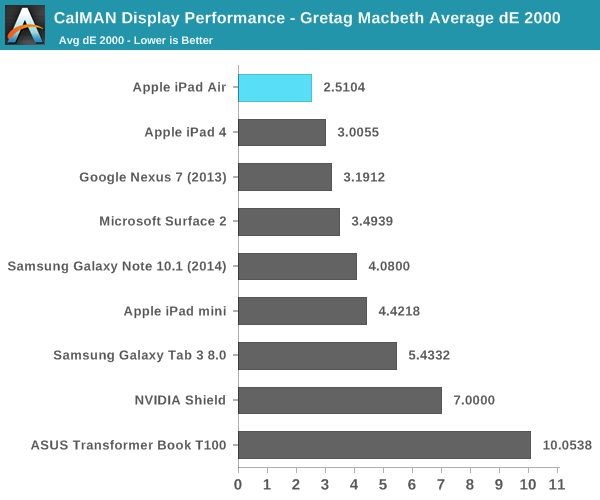

The iPad Air gets pretty bright at 426 nits, although black levels aren’t all that impressive at 0.44 nits. Overall contrast ratio is in line with what we’ve seen from previous iPads. My only complaint on the display front is I would like to see Apple laminate the cover glass to the LCD display. Reducing reflections would go a long way towards improving the usability of the device, not to mention the impact that would have on improving display quality in dark movie scenes.
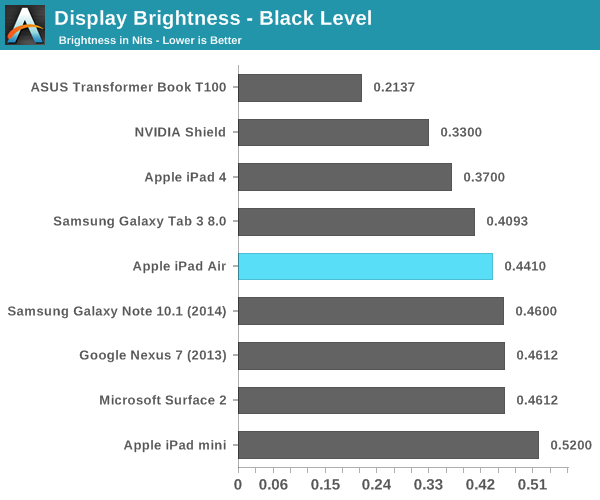
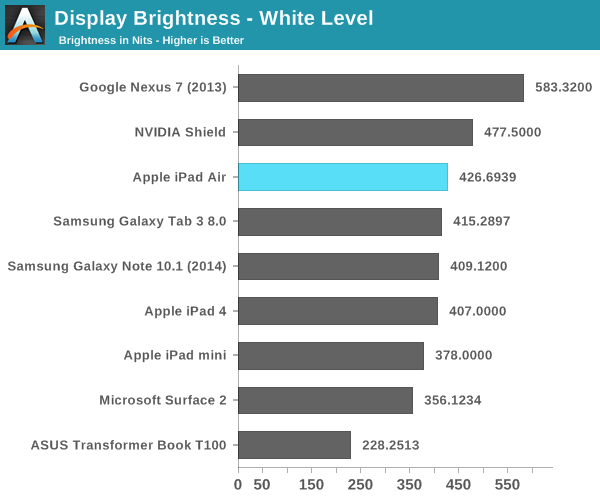
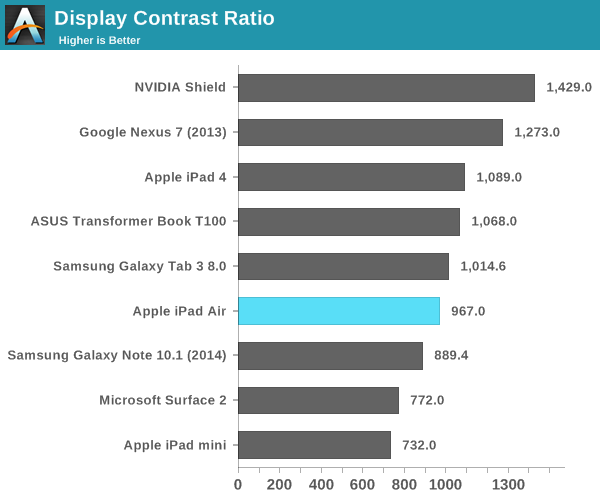















444 Comments
View All Comments
over9k - Tuesday, October 29, 2013 - link
Remember, Mavericks' big focus is RAM management. There's no reason to think iOS 7 also doesn't do some great RAM management. It's just that when talking mobile, that's not the "it" talk. Also, it's important to note that iOS devices have always used lower amounts of memory - they are just very well optimized.tipoo - Tuesday, October 29, 2013 - link
Mavericks borrowed how iOS already used memory, with background apps being able to be pushed out of memory if need be. iOS7 isn't getting Mavericks memory management, Mavericks is just getting the management iOS already had since its inception.kirsch - Tuesday, October 29, 2013 - link
I think over9k is referring to memory compression introduced in Mavericks. As far as I know this was never in iOS.tipoo - Tuesday, October 29, 2013 - link
The compression seems to work on idle apps too though, and iOS would run only one foreground app with most of the memory available to it. I just don't think it will help as much on a mostly single tasking OS.NetMage - Wednesday, October 30, 2013 - link
Actually it should help more as the recent Apps on iOS are mostly don't to run at all, but are kept in memory to improve swapping speed - these could be easily compressed with no impact on user experience.tipoo - Wednesday, October 30, 2013 - link
People saying Mavericks like compression will help: Anand measured how much RAM was in use under load. If it was compressing something, it would have been factored into how much was used. This is no holy grail here.darwinosx - Wednesday, October 30, 2013 - link
You think it needs 2 GB of ram why? It obviously doesn't. This isn't Windows or Android.DarkXale - Wednesday, October 30, 2013 - link
Because Safari is famous for resetting tabs (lost work), and many iOS apps are notorious for dropping undo states the very second you switch out of them. (Which you have to due to the inability to display more than one app at a time)Both cause data loss, which is one of the most serious events that can occur in computer systems.
Both are due to RAM constraints.
dugbug - Wednesday, October 30, 2013 - link
I have not seen that in ios7, they rewrote that behavior significantly. Would it benefit from more ram? sure. Or they could just rewrite it to cache tabs better.tipoo - Wednesday, October 30, 2013 - link
Because even with 30% less RAM use on 32 bit iOS, Safari boots tabs out like crazy and has to reload a lot of apps from NAND when switching.